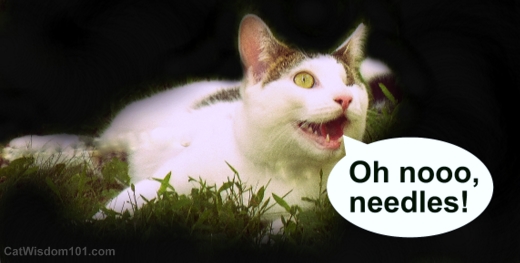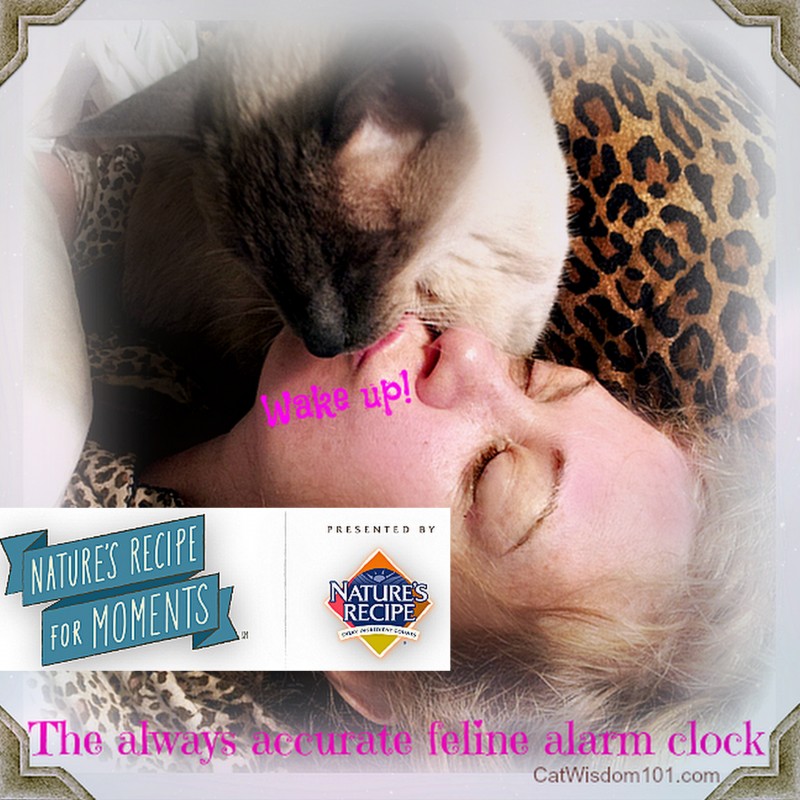Vet 101- Vexing Vaccines
Every Thursday, our vet Dr. Richard Goldstein tackles readers questions. Send them to [email protected].
Can you clear up the confusion about vaccines? What’s absolutely necessary for kittens, adults and seniors? My cats are indoor cats but sometimes when my sister visits, she brings her cat who goes outdoors.
OK, kids, buckle down for this one. A discussion on vaccines can draw more opinions than a poll on which cat breed is the greatest. There are lots of valid points to be made, and there is not a single right answer or approach. A thorough discussion with your vet about vaccine strategies is essential.
Here’s what’s generally accepted. Vaccines are divided into“core” and “non-core”.
The core vaccines are the ones that are recommended for the vast majority of cats: FVRCP (the 3-in-1, which includes Feline Rhinotracheitis (upper respiratory), Calicivirus (upper respiratory), and Panleukopenia (intestinal), and Rabies.
The non-core vaccines are “optional”, depending on the lifestyle of the cat, and include Felv, FIV, FIP (corona), and Chlamydia. (Actually, more and more people are recommending Felv as a core vaccine for kittens, as we discussed in a previous post, and the other non-core vaccines are generally not recommended at all).
Kittens need to undergo a series of vaccinations in order to build up their immunity properly. In each kitten, there is a certain number of antibodies that they receive from their mom. Over the first few weeks of life, those antibodies decrease in numbers, leaving the kitten susceptible to catching disease. The goal of vaccinating kittens is to replace mom’s antibodies with longer lasting antibodies. But since there is no way of predicting when a kitten’s maternal antibodies will decrease, it is essential that kittens receive a booster FVRCP shot every 3-4 weeks from about 8 weeks until about 16 weeks of age. This will substantially increase the likelihood of protection. (Note, it is not the NUMBER of shots they get, but the AGE they get them that is important.
So, if a kitten receives his first shots at 6 weeks, he will need 4 shots. If a kitten gets his first shots at 9 weeks, he may only need 3.) After the kitten series, it is now generally recommended that cats should be boostered at a year of age. Adult cats can then be boostered every 3 years, or can have antibody titers checked to see if boostering is necessary.
Adult cats. When deciding whether to continue the FVRCP vaccine in adult cats, it’s important to look at the cat’s lifestyle, and the way diseases are transmitted. Feline upper respiratory viruses can be transmitted via the air. But the most common way they are transmitted is through contact with an infected cat’s “secretions.” What if you do volunteer work at the local shelter (which I would commend you for!!!), and a sick cat sneezes on your shoes? When you get home, your strictly indoor kitty sniffs your shoes. If your kitty hasn’t been vaccinated, you’ve just potentially exposed her to an upper respiratory virus.
It’s also important to look at the overall health of your cat when deciding whether or not to continue vaccines. In some cases, it may be best for ill cats to have their vaccines postponed or discontinued.
There is also some thought that the individuals that benefit most from vaccination are the very young and the very old. (That’s why senior citizens are urged to get their flu shots!) Checking antibody or titer levels is a viable alternative to continuing vaccination. If your adult cat has a protective antibody level, she may not need to be boostered. The down side of titer testing is that it can be more expensive than a booster, and may need to be done more often than every 3 years.
Rabies is an entirely different story. Unfortunately, politics and local laws often dictate which cats need rabies shots, and how often. The type of vaccine used also affects how often a cat needs a rabies shot. Several years ago, rabies vaccines were implicated in causing fibrosarcomas (a form of cancer) in cats. It was later shown that the “adjuvant” (the other stuff in the vaccine that helps stimulate the immune reaction) was responsible for the tumor formation. Now, many companies make single-dose, non-adjuvanted rabies vaccines that are considered to be safer. But they only last one year. Again, lifestyle can come into play here.
In New York State, all cats (even indoor cats) are required to be current on their rabies vaccines. Is this a bad thing? Consider the cat living in an area where a rabid bat gets into the house. Or consider the cat that escapes and has a nasty encounter with an unknown assailant. Or the cat that becomes frightened by a human visitor and accidentally bites her (this one is where the legal issues trump the health issues). Rabies is invariably a fatal disease. Can you be 100% sure your cat won’t ever be exposed? The vaccine may be your insurance policy. Just food for thought.
And just a word about the Felv vaccine. As I mentioned, there is strong evidence to consider making Felv a core vaccine for kittens. Young cats are much more susceptible to becoming infected with Felv than older cats. Again, it may be another insurance policy to protect your cat in case she escapes or becomes exposed to Felv at some point in her life.
So, how does this boil down? A frank discussion with your vet about what’s best for your cat is essential. As you can see, no longer does every cat need every vaccine every year. But there’s lots to consider, and no absolutely correct answer.





4 Comments
CATachresis
Very interesting info there. As you say there is debate, especially with regard as to whether the annual flu shot is really needed during the middle years. Of course there are differences across the world with what felines are susceptible to. In UK, hitherto, we have not had to worry about rabies. Thanks x
Weetzie's
Great post! I’m a firm believer in the vaccines as “insurance policy”, too. Our cats have never been outside, but I can’t say with 100% certainty that they never will be.
Caren Gittleman
fabulous info! My motto is “better safe than sorry”
Brian
Yep, that’s great info, we just had that discussion with our vet as well.